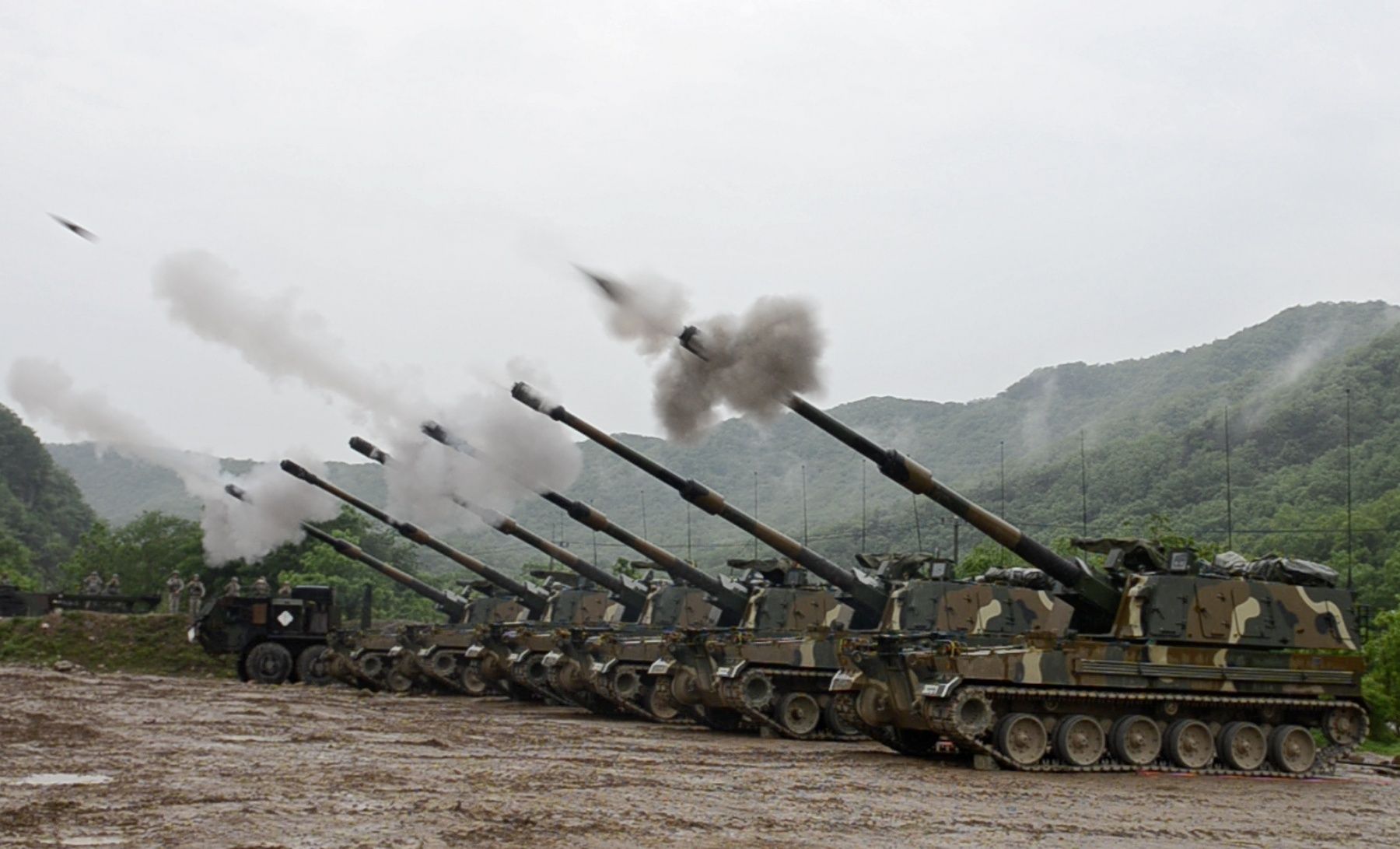Less than six miles from the Demilitarized Zone that separates North and South Korea, the 30 U.S. and South Korean heavy artillery vehicles lined up, May 10, were the largest coordinated artillery fires many had seen.
Soldiers from the 1st Battalion, 82nd Field Artillery Battalion, 1st Armored Brigade Combat Team, 1st Cavalry Division, participated in a live fire exercise with Republic of Korea Army soldiers from several battalions of the 26th Mechanized Infantry Division Artillery.
In six M109A6 Paladins, U.S. Soldiers fired with ROK soldiers in 24 heavy artillery vehicles — the K55A1 155 mm self-propelled howitzer, and the K9 Thunder 155 mm self-propelled howitzer. A total of 30 “guns” occupied the firing point and simultaneously engaged targets in the St. Barbara’s impact area approximately six kilometers away.
For most Soldiers in 1-82 FA, it was the largest artillery live fire they had ever witnessed.
“It definitely caught me off guard,” said 1st Lt. Robert Kurz, Combat Observation and Lasing Team platoon leader. “I’ve never seen more than one battery (six guns) engage a target at one time. The ROK Army’s ability to mass fires is impressive.”
Both U.S. and South Korean observers called in fire missions, where all guns engaged a single target, and with all rounds within a battery impacting nearly simultaneously.
The exercise was the culmination of more than a month’s worth of planning between U.S. and South Korean Soldiers, and critically important to the U.S. artillery mission in the Korean Peninsula.
“Partnership is important, especially here in Korea, because we will be fighting as a multinational coalition,” said Lt. Col. Douglas Hayes, commander, 1-82 FA. “It’s important to rehearse on multiple levels so we understand how we will fight.”
For the Korean artillerymen involved in the exercise, the exercise reinforces joint fires and the ability of U.S. and ROK forces to “Fight Tonight.”
“By having an exercise together with U.S. Army, not only can we reduce trial-and-errors, but also we can react to the situation promptly during war-time combined operations,” said Lt. Col. Jong Hwa Jung, commander of the 228th Field Artillery Battalion.
It was the second major exercise with U.S. counterparts, and they plan to continue the joint exercises — they partnered with 3rd Battalion, 16th Field Artillery Regiment, 2nd Armored Brigade Combat Team, 1st Cavalry Division last year.










